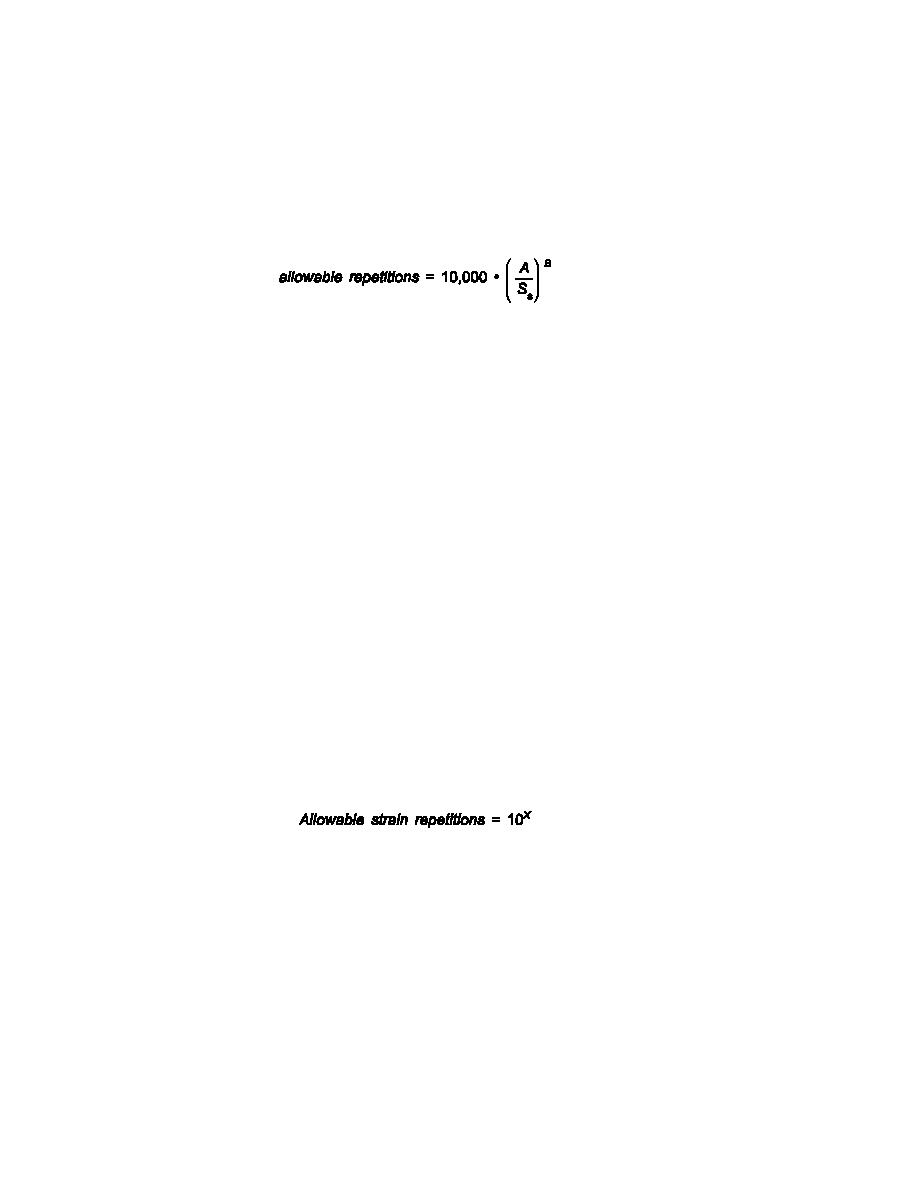
UFC 3-260-02
30 June 2001
a. Subgrade Strain Criteria. The subgrade strain criteria were developed from the analysis of field
test data and present the allowable number of strain repetitions as a function of strain magnitude. The
data analysis indicated that the relationship between allowable repetitions and strain magnitude is
slightly different for subgrades having different resilient moduli. The criteria are presented in graphic
form in Figure 11-5 and can be approximated using the following equation:
(11-3)
where
A = 0.000247 + 0.000245 log MR
MR = resilient modulus of the subgrade, psi
Ss = vertical strain at the top of the subgrade (in./in.)
B = 0.0658 M0.559
R
b. Asphalt Strain Criteria.
(1) The primary means recommended for determining values of limiting horizontal tensile strain
for bituminous concrete is the use of the repetitive load flexural beam tests on laboratory-prepared
specimens. Procedures for the tests are presented in detail in Appendix L. Several tests are run at
different stress levels and different sample temperatures such that the number of load repetitions to
fracture can be represented as a function of temperature and initial stress. The initial stress is converted
to initial strain to yield criteria based on the tensile strain of the bituminous concrete.
(2) An alternate method for determining values of limiting tensile strain for bituminous concrete
is the use of the provisional laboratory fatigue data employed by Heukelom and Klomp. These data are
presented in Appendix L in the form of a relationship between stress, strain, load repetitions, and elastic
moduli of bituminous concrete. The allowable strain repetitions may be approximated by the equation
(11-4)
where
X = 2.68 - 5.0 log SA - 2.665 log E
SA = tensile strain of asphalt (in/in)
E = elastic modulus of the bituminous concrete (psi)
c. Chemically Stabilized Layers. For cement- and lime-stabilized materials, the criteria are to be
developed using test procedures outlined in Appendix B. When flexural fatigue tests are not possible,
then a preestablished relationship as shown in Figure 11-6 should be used.
11-8



 Previous Page
Previous Page
